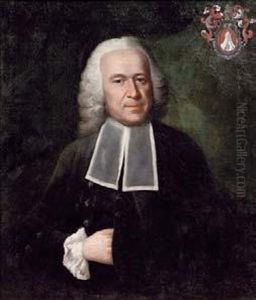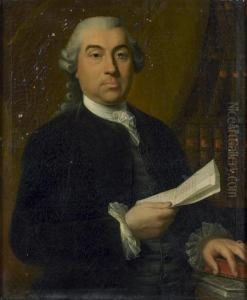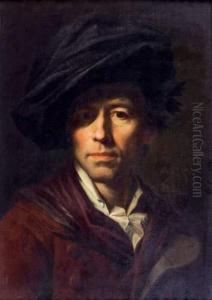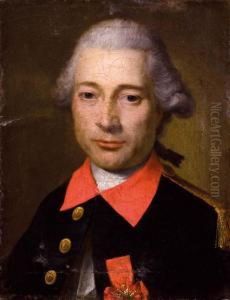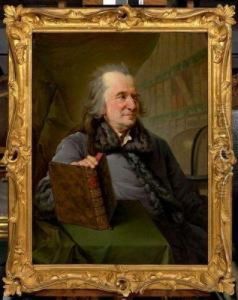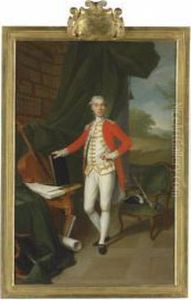Johann Melchior J. Wyrsch Paintings
Johann Melchior J. Wyrsch was a prominent Swiss painter and art educator, born in 1732 in Buochs, a municipality in the canton of Nidwalden, Switzerland. He is best remembered for his contributions to portraiture and religious painting during the late Baroque and early Neoclassical periods. Wyrsch's artistic journey began in his native Switzerland, but his quest for artistic development led him to further his studies and work in various parts of Europe, most notably in France and Italy, where he was influenced by the prevailing artistic movements and the works of contemporary masters.
In the 1750s, Wyrsch moved to Paris, where he was significantly influenced by French art and culture. During his time in Paris, he studied under notable artists and was exposed to the works of the French Rococo painters, which is evident in his early works that feature the delicate colors and playful themes characteristic of the period. However, Wyrsch's style evolved over time, incorporating more dramatic expressions and a stronger emphasis on realism, which were hallmarks of the emerging Neoclassical style. His ability to blend the Rococo style with Neoclassical elements made his work particularly appealing to a wide audience.
Wyrsch is perhaps best known for his religious paintings and portraits. His religious works often depicted biblical scenes and saints, executed with a deep sense of devotion and attention to detail. These pieces were characterized by their emotional depth and the use of light to highlight the spiritual aspects of the subjects. In his portraits, Wyrsch excelled in capturing the personality and essence of his sitters, showcasing his skill in rendering the human figure with accuracy and sensitivity. His portraits were highly sought after by the elite of Swiss society, as well as by visitors from abroad.
In addition to his painting, Johann Melchior J. Wyrsch played a significant role in the education of future artists. He was deeply committed to the training of young artists and contributed to the development of art education in Switzerland. His teachings emphasized the importance of drawing from life and studying the works of the great masters, principles that were foundational to art education at the time.
Johann Melchior J. Wyrsch's legacy is not only found in his contributions to Swiss art but also in his influence on the artists who followed him. Despite facing the challenges of working in a period of transition between artistic styles, his work remained relevant and respected. He died in 1798, leaving behind a body of work that continues to be celebrated for its artistic merit and historical significance.
